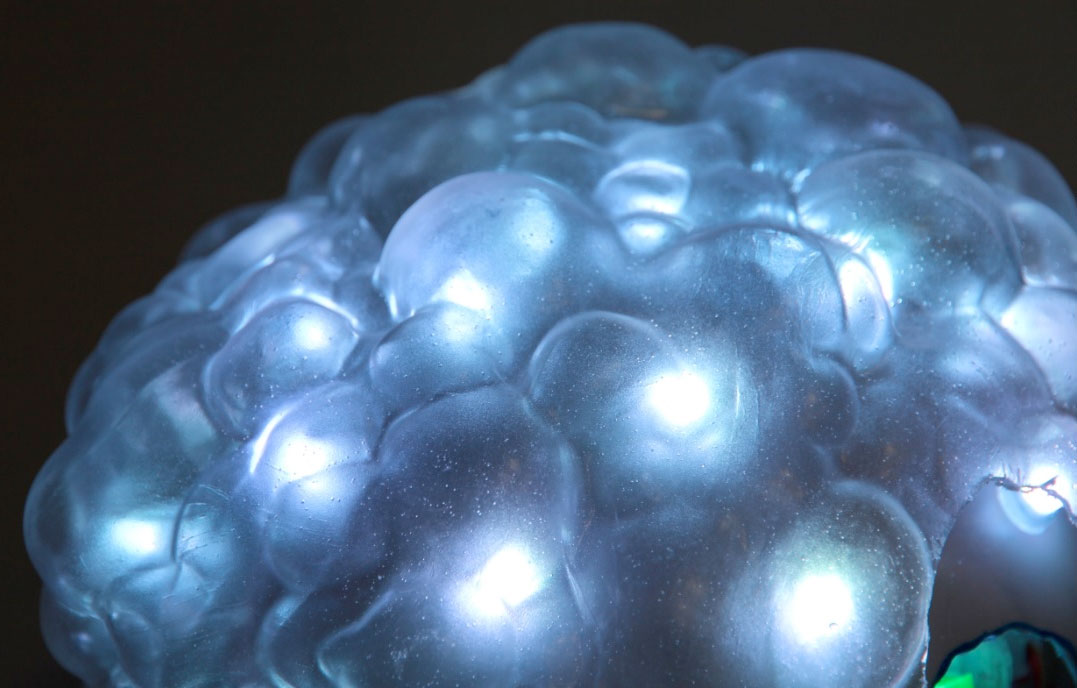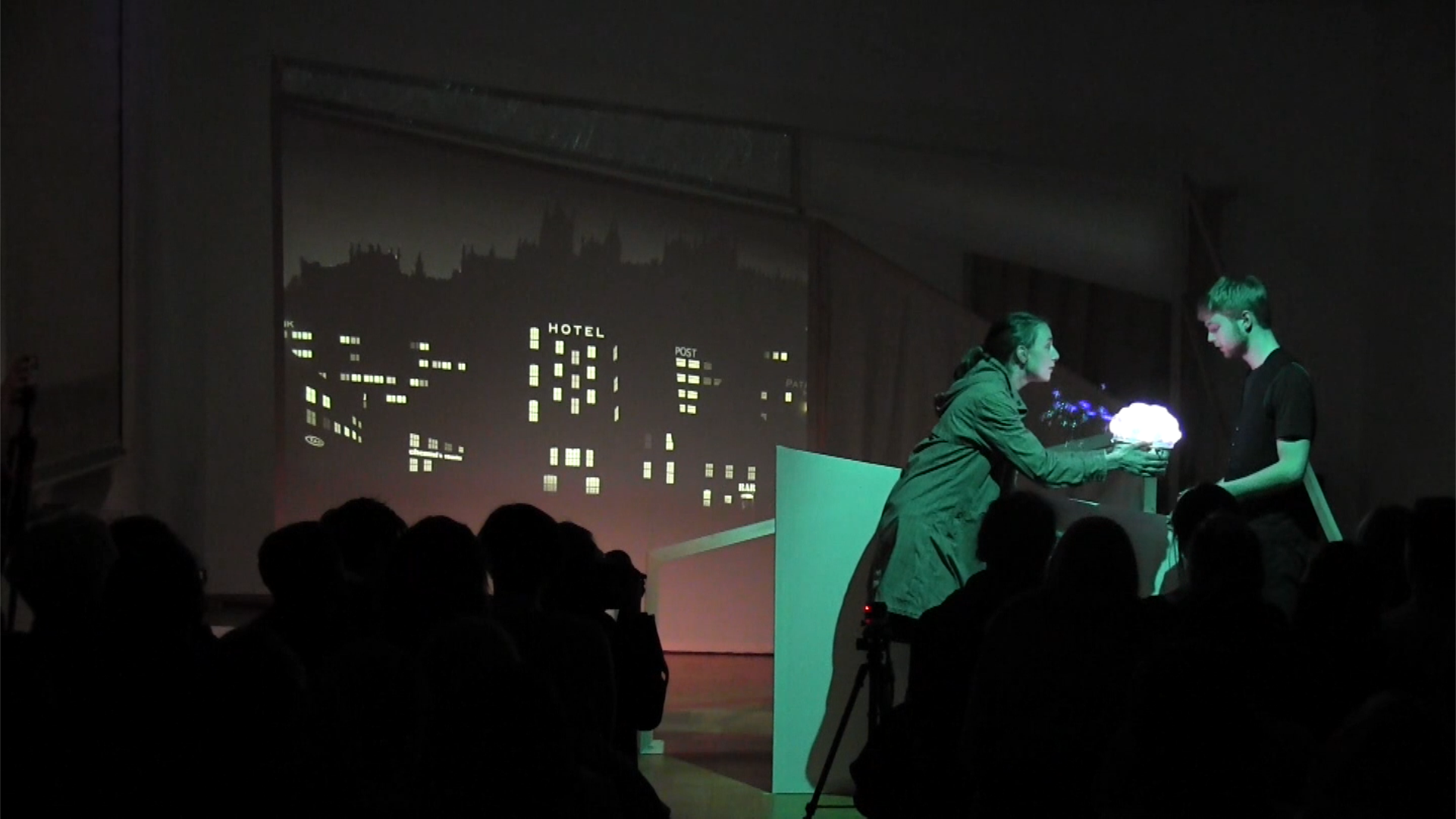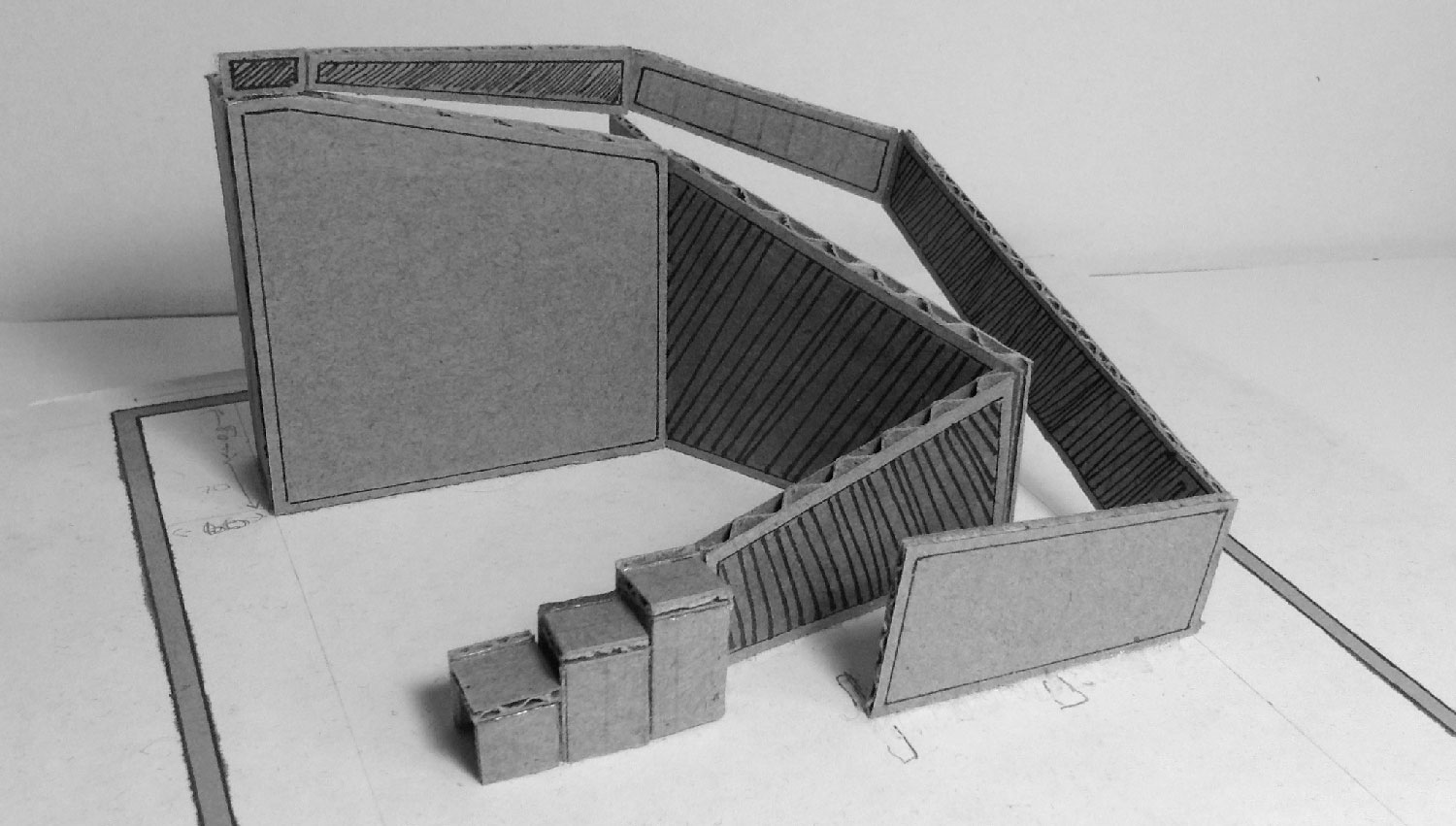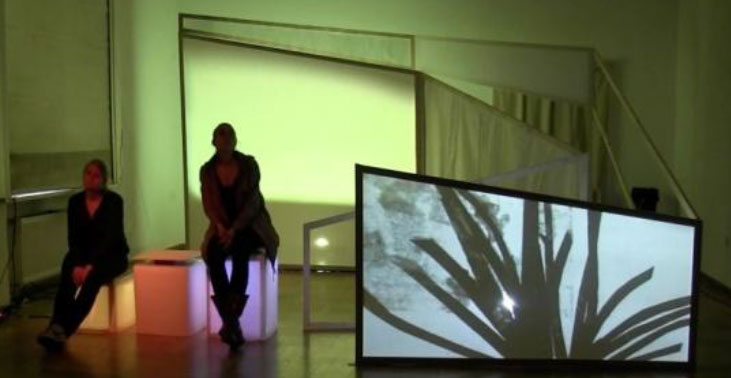Exploring Interactive Theatre, Bauhaus-Universität Weimar, HCI Group, winter term 2014/15.
Dusk is a short contemporary theatre performance based on a short story by Saki. It includs interactive technologies in props, stage, and costume design.




In winter term 2014/15, I initiated a student project together with my colleague Patrick Tobias Fischer that explored interactive technologies for theatre stages. As an engineer, Tobias’ expertise lies in media facedes and the creation of playful collaborative interactive systems. As a designer with experiences in the performing arts, I was in charge of choosing an suitable story and took care of all aesthetic issues, besides supporting the technical development and managing the whole production process. We collaborated again with the drama educator/ theatre pedagogue practitioner Julia Hahn who helped us to develop the script, and who directed the staging process with the semi-professional actors. Eleven students of Computer Science & Media, Human-Computer Interaction, Product Design, Media Art & Design, and Media Architecture worked collaborative during the classes. The goal was to conceptualize, develop, and test interactive technologies for props, costumes, and stage design for a theatre performance. The whole production took around 18 weeks – we did everything from ideation and script preparation, over building and testing the various interactive elements, to rehearsals, stage set-up, advertisements, and running the show. In March 2015, we had two public performances for around 100 spectators in total.
Dusk is a short story by the British author Hector Hugh Munro a.k.a. Saki. The story takes place in London’s Hyde Park, most of the time on a bench. The main character is Norman Gortsby who is finally been fooled by a young wealthy man. Gortsby thought this man had lost a bar of soap that he found underneath the bench. The young additionally told him he could not find his hotel anymore, and so Gortsby borrowed some money to him. The end of the story reveales that the soap belonged to a poor old man, and his own thoughts and beliefs cheated Gortsby.
After developing the script, we agreed with the director on emphasizing three core themes for our theatre performance – the ambience and ambivalence of a big city, a tiered society between rich/powerful and poor/unimportant, and subjective thoughts and prejudices. The soap and the bench further seemed to be central symbols for us. Based on these considerations we developed the conceptual designs for four interactive systems: the background projection wall evokes the city’s lightshadow atmosphere of danger and adventure, the foreground projection wall represents inner thoughts and prejudices, the soap is a symbol of a class society since only rich people could afford it at Saki’s time, and the bench is a contradictory place of equality and encounter. Afterwards, the students worked in small interdisciplinary teams to build these four interactive systems. Before the opening night, we had one intense rehearsal week with the actors what revealed weaknesses and caused slightly conceptual changes at some points, and finally helped very much to stage all intended interactive systems.
Premiere _ Bauhaus-Universität Weimar, March 10th, 2015.
Project website _ uni-weimar.de/projekte/interactive-theatre
Participating students _ Bahar Akgün, Claire Dorweiler, Djamel Merad, Jie Qiu, Liese Endler, Marie Vogelmann, Muhammad Raisul Islam, Preetha Moorthy, Thien Chinh Nguyen, Thomas Keßler, and Yvonne Götzl
Supervision _ Eva Hornecker, Patrick Tobias Fischer, and Michaela Honauer
Director of performance _ Julia Hahn
Actors _ Maria Frölich, Rafael Ecker, and Julia Hahn
Concepts of the Interactive Elements
City Atmosphere – Background Video Wall influenced by Motion Data _ In general, our stage design is minimalistic and we created atmosphere with stage lighting, ambient sounds, and a 2x3m screen in the back. The visuals for this background projection are interactive in three scenes what we realized with a Kinect sensor that hanging from the ceiling to capture the space in front of the screen. All interactive scenes are projections of the city during the night. In one scenes, Gortsby switches on and off the lights in the houses by walking along. In another scene, Gortsby uses his hands to wipe out fog, and in the last scene the city scenery passes by according to his walking velocity. Creators: Claire Dorweiler and Thomas Keßler.
Equality and Encounter – Illuminated Motion Sensitive Bench _ The bench is where the three characters of the story meet. Our more abstracted version of the bench are three cubes of different heights representing the social hierarchy of each role. The bench is a medium that characters of different class use as a place to reflect and to have conversations. The actors can tilt the plate on top of each cube by shifting their weight left, right, or sitting straight, and that again triggers sound and light (through two simple switches implemented underneath each plate). Creators: Bahar Akgün, Muhammad Raisul Islam, and Marie Vogelmann.
Inner Thoughts – Wearables connected to Foreground Video Wall _ The stage design further includes two smaller screens where we project a mix of close-up videos from nature and abstract graphics. These should be symbols for societal prejudices that have a strong influence on Gortsby’s thoughts. The actress is conceptually connected with the stage environment through wearables (pulse sensor and microphone integrated in her jacket) – biometric parameters symbolize the inability to counter prejudices (projected water ripples are aligned with the heart beat) and to simultaneaously act based on these prejudices (the video’s brightness is influenced by the voice). Creators: Yvonne Götzl and Thien Chinh Nguyen, with support of Preetha Moorthy.
Class Society – Huge Foaming Hand-held Soap _ The soap is a symbolic prop and stands for innocence, abundance and cleanliness. It is larger than a usual bar of soap to be perceivable for all spectators. Our design has a transparent bubble-shaped casing for housing a hacked toy soap bubble gun that can be triggered by the actors through a proximity sensor at its side. In the key scene where Gortsby finds the soap, the actors use this prop to activate the integrated light and the bubble gun. Creators: Djamel Merad and Marie Vogelmann.
Publication
- Michaela Honauer, Patrick Tobias Fischer, Eva Hornecker, Julia Hahn, Bahar Akgün, Claire Dorweiler, Liese Endler, Yvonne Götzl, Muhammad Raisul Islam, Thomas Keßler, Djamel Merad, Preetha Moorthy, Thien Chinh Nguyen, Jie Qiu, and Marie Vogelmann. 2017. Dusk: Adaption and Perception in Interactive Theatre. In Proceedings of the 2017 CHI Conference Extended Abstracts on Human Factors in Computing Systems (CHI EA ’17). ACM, New York, NY, USA, 1037-1045. https://doi.org/10.1145/3027063.3053334.